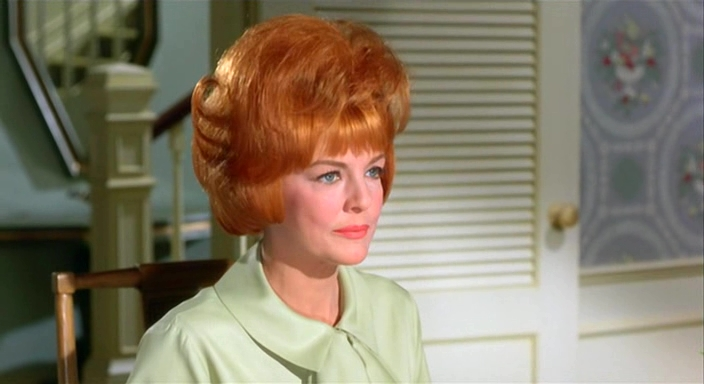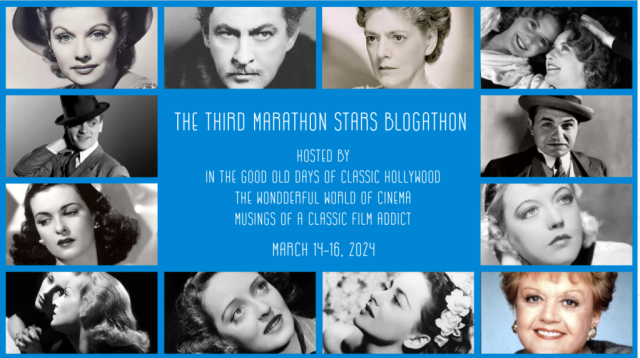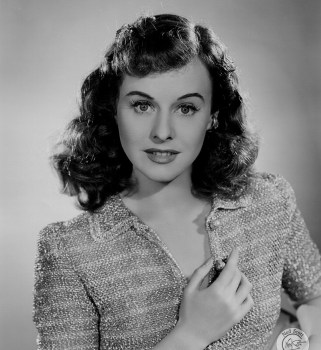
When I saw this event announced, it took me a bit to decide who I wanted to marathon for this event. The no more than three films viewed requirement also caused further deliberation. No binging a favorite, I needed to pick a rarely viewed star whom I wanted to watch. As I thought more and more about some of my favorite performers, I thought about Paulette Goddard. I’d only seen her in three films: Modern Times (1936), The Women (1939), and Hold Back the Dawn (1941). I loved her in each film. Goddard’s films, with the exception of the ones I’d previously watched, rarely air on TCM. I believe this is most likely due to Goddard being under contract to David O. Selznick and later Paramount. Both of these studios’ output is outside of the Warner Brothers film library to which TCM has access. The film library is made up of the output of Warner Brothers, RKO, and pre-1985 MGM films. As a result, stars under contract with the aforementioned studios are more likely to have a stronger presence on TCM.
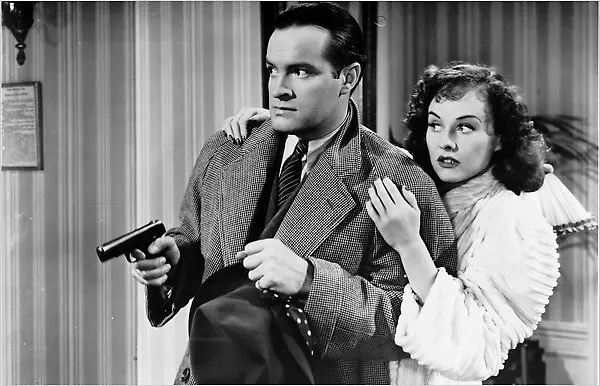
But I digress. I selected Paulette Goddard, as I had handful of her films available in my home library and had a couple of her films recorded. As I reviewed my choices for this marathon, I realized that 3/5 Goddard films also featured Bob Hope. Hope was another Paramount contract player with a long film career. As I thought about which of his films I’d watched, I realized that I’d only seen a couple of his films as well. I decided to add Hope to my entry for this blogathon event.
Paulette Goddard
Dramatic School (1938)
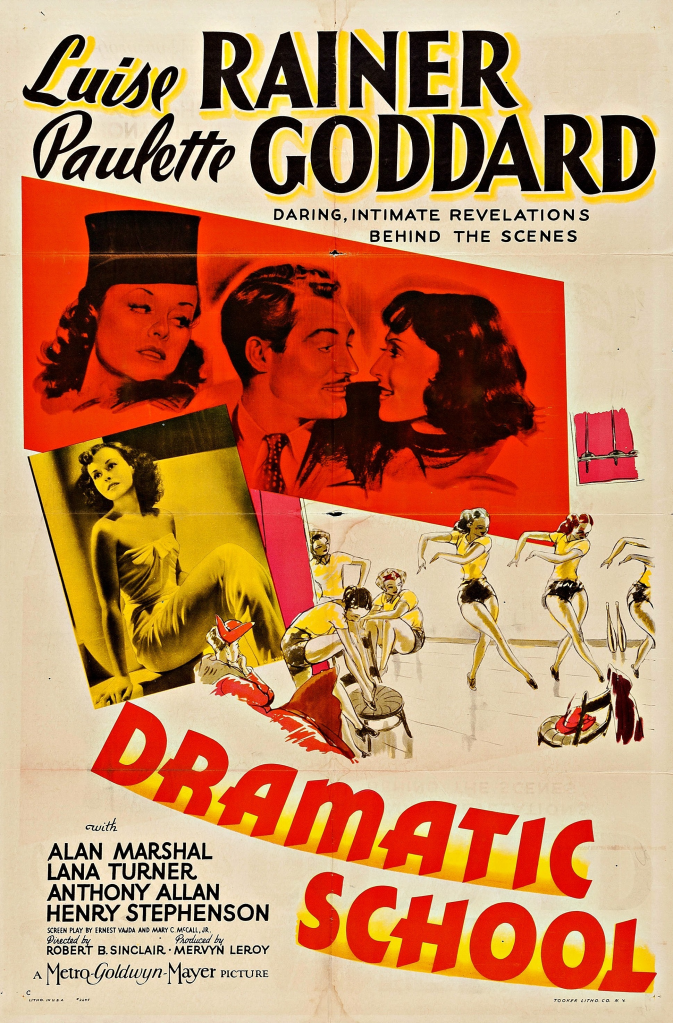
This film is reminiscent of Stage Door (1937) and Finishing School (1934). All three films are about a group of women either living or working together–all involved in the same pursuit, whether it’s living at the Footlights Club boarding house for aspiring actresses (Stage Door), attending the same finishing school (Finishing School) and in the case of Dramatic School, it’s a group of women attending the same, you guessed it, dramatic school. The humor and drama from the film comes from the women’s interactions with one another and their various rivalries when it comes to men and desired acting roles.
Luise Rainer plays the star student, Louise Mauban, who spends her evenings working in a factory to pay for her drama lessons. Due to burning the candle at both ends, Louise is constantly late. To avoid revealing her evening job to her classmates, Louise concocts a lie about spending her evenings being wined and dined by her boyfriend, the Marquis Andre D’Abbencourt. Louise’s classmates begin to suspect that she’s lying, as the stories seem a little too fantastic to be true. Paulette Goddard plays the ringleader, Nana, who comes up with a scheme to reveal Louise’s lie and embarrass her in front of her classmates. It is obvious that Nana and the other girls, one of whom is played by Lana Turner, want to knock Louise down a peg.
Nana’s scheme is to invite Andre and Louise to her birthday party, and bring up one of Louise’s stories in front of Andre. Nana assumes that Andre will inadvertently spill the beans about not dating Louise, which will expose Louise as well as embarrass her. However the plan backfires when Andre is somehow charmed by the stories about him and Louise’s dates, and decides to play along. Then they become a real couple.
Despite being second billed, Paulette really doesn’t have a huge role in the plot. This is more or less Rainer’s film. However, I don’t want to focus on Rainer, because frankly I would have much rather seen more Paulette. Her character is more or less the villain of the film, as she wants nothing more than to humble Louise. I wish her scheme had gone off as she’d planned, it would have made the movie a lot more interesting to watch. Dramatic School was pretty much a dud, but Paulette managed to breathe some life into it every time she was on screen. Her vivacious personality added some nice levity and livened things up, and believe me this film needed all the life it could get.
The Crystal Ball (1943)
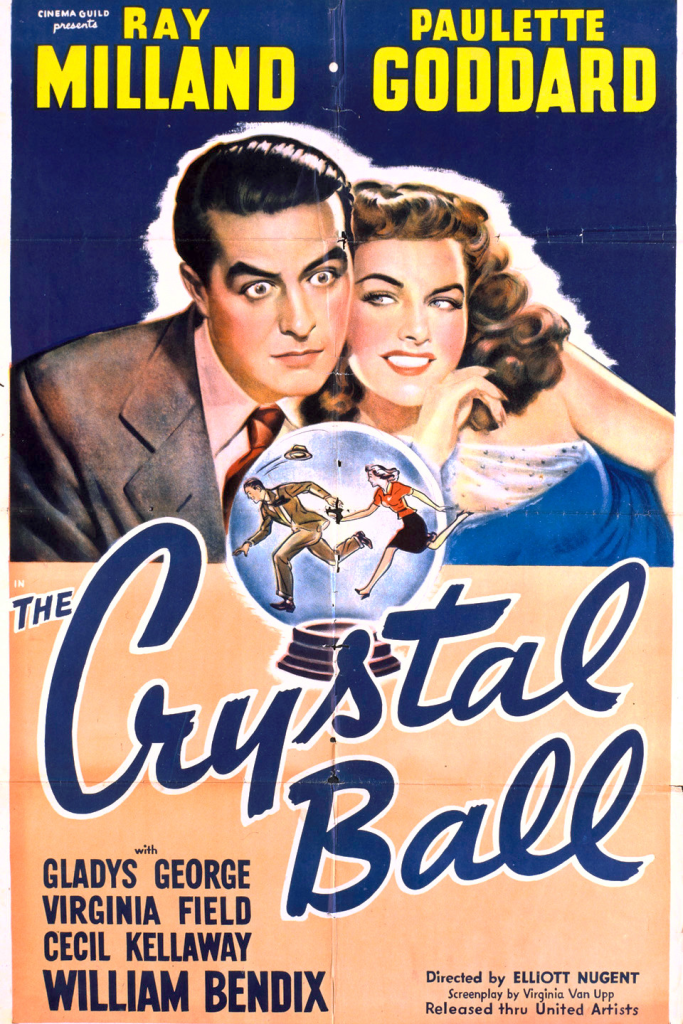
This was a blind buy I’d actually purchased from Classic Flix during a previous sale. I’d never heard of this film before, but it sounded fun and I was intrigued by the cast: Goddard, Ray Milland, William Bendix, Cecil Kellaway, Gladys George? I finally watched the film for this blogging event and I’m glad I did. It was a lot of fun.
In this film, Goddard plays Toni Gerard, a young woman who moves to New York from Texas. Homeless and desperate for a job, she reluctantly takes a job as a decoy for a local shooting gallery, run by Pop Tibbets (Kellaway). Having revealed in a conversation with Madame Zenobia (George) that she was a sharpshooter back home, Toni is referred to the shooting gallery for a job. After showing off her shooting skills, Pop hires her. Her job is to pretend to be a random passerby who chooses to try her luck at the shooting gallery. She’ll hit all the targets and attract other customers to try their luck. Then Toni leaves and comes back later when a new batch of potential customers are around.
Madame Zenobia is part of another scam with her colleague, a woman who obtains work as a maid at the homes of wealthy clients. After working for the client for awhile, she determines a piece of jewelry or something else of value that the client loves and would notice if it went missing–or she makes a point of making sure the client knows it’s missing. At the beginning of the film, the maid’s target is wealthy widow Jo Ainsley (Virginia Field). She takes one of Jo’s prized rings and drops it down the drain pipe. She then cries to Jo that her ring is missing and puts on the crocodile tears, feigning distress about her client’s lost property. The maid also cleverly deflects any sort of blame or suspicion. She then convinces Jo to visit a psychic who could tell her the location of her ring. Then of course, before Jo’s visit, the maid has gotten to Madame Zenobia to reveal the location. Jo’s confidence in psychics is affirmed when Madame Zenobia tells her the location and it turns out to be true.
Eventually, Madame Zenobia is injured and Toni has to fill in. She runs both the shooting gallery and psychic scams. Toni also lives at Madame Zenobia’s store. One evening, she spots Jo and her boyfriend, government lawyer Brad Cavanaugh (Milland) entering Madame Zenobia’s store. His chauffer, Biff Carter (Bendix), waits outside. Toni is instantly smitten with Brad and decides to use her new position as the psychic to break up Brad and Jo so she can have him for herself. This scheme is the start of a highly questionable impression that Toni does when she pretends to enter the spirit of Brad’s deceased Native American friend. Toni uses a lot of bad Native American stereotypes and the “injun” slur. This would NEVER go over today. It definitely goes on a bit long too, I think it could have been edited down a smidge.
Regardless, Goddard and Milland have fantastic chemistry–a chemistry that would carry them through four films together. She also has a lot of great comedic moments and gets to wear a few great dresses, including an one shouldered sequin gown that is reminiscent of the one she wears in The Women. Goddard looks absolutely gorgeous in this film and even though the ending kind of doesn’t make sense, we know that she and Milland will end up together.
—
Paulette Goddard & Bob Hope
The Cat & the Canary (1939)
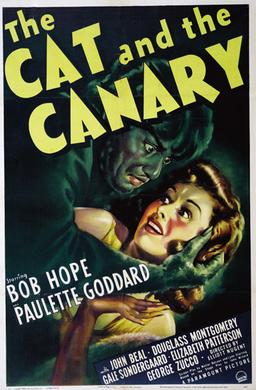
This was a really fun horror-comedy film starring Paulette Goddard and Bob Hope. Goddard and Hope made three films together and I watched all three. ‘Canary’ starts with a familiar horror movie premise: a group of people are invited to come to a large estate. The guests are familiar with the host, but don’t know each other. Typically the guests are either offered an incentive to stay (House on Haunted Hill), or are stuck there due to circumstances (The Old Dark House), or in the case of The Cat and the Canary, the guests are there to witness the reading of the deceased homeowner’s will. In this film, the deceased Cyrus Norman’s will stipulated that the heir to his estate and fortune could not be revealed until 10 years after his death. 10 years is up and that is the start of our film.
Goddard plays Joyce Norman, the only actual direct relative of Cyrus’ and the sole heir. However, he has named a first runner-up heir, should the sole heir not be able to live up to the terms of the will–specifically not to go insane within the first 30 days. It’s a weird clause, but it’s well established that Cyrus was an eccentric individual. The runner-up heir’s name is not revealed, which sets up another typical horror film trope–the guests turning against one another. Bob Hope plays another relative of Cyrus’, Wally Campbell. He however, is not related to Joyce. Other guests include Cyrus’ aunt Susan (Elizabeth “Miss Trumbull” Patterson) and a mousy relative named Cicily. Then there are two men, Fred Blythe and Charles Wilder, who seem to resent not being named heirs.
It can be expected that a bulk of the film will involve the other potential runner-up heirs, save for Wally, trying to torment Joyce and drive her insane. Wally makes it a point to be on Joyce’s side and keep an eye on her and keep her safe from the other guests. When I got through Hope and Goddard’s other two films, I noticed that a common plot line was Hope being in love with Goddard. This film was no exception. Hope and Goddard have a nice rapport and chemistry with one another and I enjoyed their three films immensely.
The Ghost Breakers (1940)
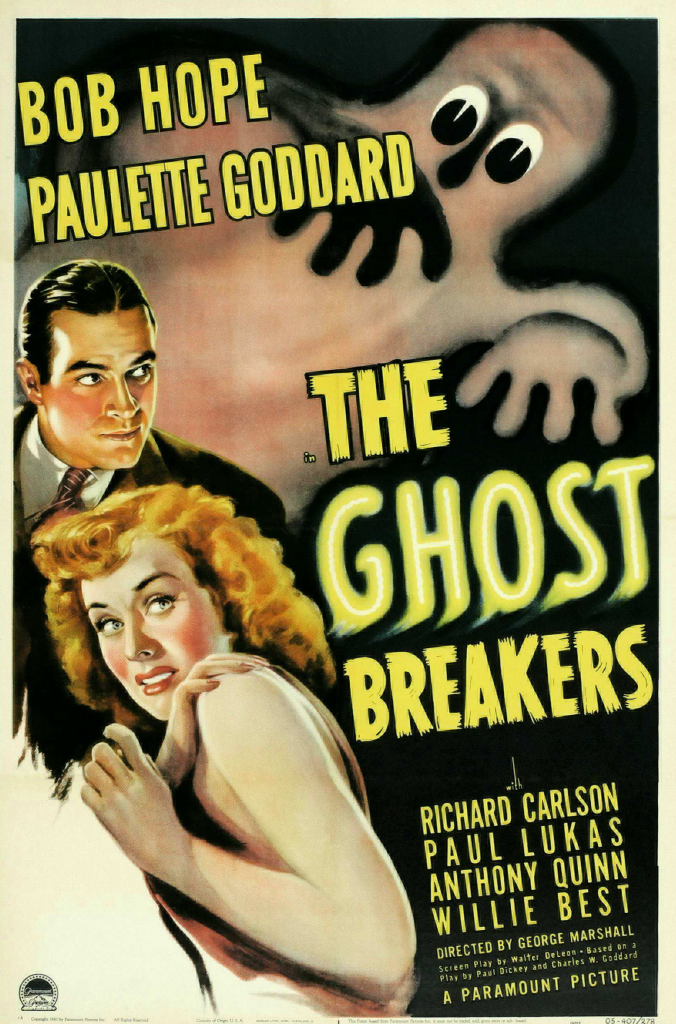
This was Paulette Goddard and Bob Hope’s second film together and ended up being my favorite of the three. In this film, Hope plays Lawrence “Larry” Lawrence Lawrence, a radio broadcaster who uses his show as a platform to expose the crimes of local gangster, Frenchy. Goddard plays Mary Carter, a woman staying at the same Manhattan hotel as Frenchy. During the broadcast, Mary is visited by Cuban solicitor Parada (Paul Lukas), who is delivering the deed to a plantation and mansion in Cuba that she’s inherited. Parada wants to take the property off her hands and buy it, but Mary refuses. Another Cuban, Ramon Mederos (Anthony Quinn), calls Mary and warns her not to sell her property. After the radio broadcast ends, Larry is invited by Frenchy (who heard the program) down to the hotel.
Larry arrives at the hotel with a gun, thinking that Frenchy inevitably will try to kill him. At the same time, Ramon arrives as Parada is leaving. Larry, Frenchy, Ramon and Parada all end up in a shootout with Ramon killed in the fracas. Larry thinks he may have accidentally killed Ramon. He ends up hiding in Mary’s steamer trunk, hoping to escape. The plan goes off and he ends up on an ocean liner to Havana with Mary. On board, Mary and Larry end up meeting Geoff (Richard Carlson), an acquaintance of Mary’s. Eventually, Mary and Larry make it to the property that she inherited.
This film was a lot of fun and I attribute its success to the wonderful rapport between Paulette Goddard and Bob Hope. This was another film where Hope fell in love with Goddard. She has such a delightful presence in her films, as she brings some humor imbued with glamour and charm. Hope pretty much plays the same type of guy in a lot of his movies–the wisecracking everyman, but it works. I loved this film and actually found the ending to be surprising.
Nothing But the Truth (1941)
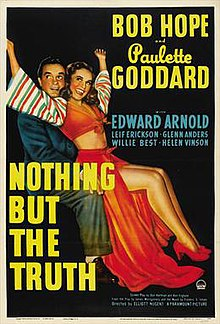
This film was Paulette Goddard and Bob Hope’s last film together. In this film, Hope plays stockbroker, Steve Bennett, who moves to Miami to take a new position—working for TT Ralston (Edward Arnold). On his first day, TT’s niece, Gwen Saunders (Goddard) shows up, in need of money to cover a $40,000 pledge she’s made to a charity. TT promised Gwen that he’ll cover half of her pledge if she can come up with the other half. It either wasn’t clearly stated, or I missed this minor plot point, but it seems that the charity gave Gwen $10,000 and she promised to increase it to the $40,000. The charity’s manager, Mr. Bishop (Grant Mitchell) appears throughout the film trying to find out the status on his $10,000. Gwen appeals to Steve to invest her $10,000 and double it. The catch? She only has 24 hours to give Mr. Bishop the $40,000 pledge, or return the $10,000 otherwise he’ll have her arrested for embezzlement. It seems like it’d be easier to return the $10,000, but we wouldn’t have a movie if she did.
At the same time, Steve tells TT and his other colleagues that he doesn’t approve of their procedure to push bad stocks onto unsuspecting clients. He insists that they could be just as successful telling the truth versus lying. TT and the other men think Steve is crazy, but make a bet with him that he can’t tell the truth for 24 hours. TT puts up $10,000 and Steve puts up Gwen’s $10,000. With $20,000 on the line, we have the main plot of our film. There’s a very funny scene later in the film when Steve’s honesty is tested when he converses with a “mature” woman who insists she looks 30.
Again in this film, Bob Hope’s character is in love with Paulette’s. They have some very funny scenes together. Hope has some great scenes where due to circumstances, he has to try and sneak around on a yacht wearing a dressing robe, belonging to Linda, an exotic dancer.

Bob Hope
Road to Singapore (1940)
Surprisingly, I had never seen one of Bob Hope and Bing Crosby’s “Road” movies. I decided to watch their first film together and enjoyed it very much. There was obviously some humor and situations very of their time, but overall it was an enjoyable film. Hope plays Ace Lannigan, the best friend of Crosby’s character, Josh Mallon. At the beginning of the film, the two men work on the same ship. Upon disembarking the ship, Ace and Josh notice the mistreatment their colleagues receive at the hands of their wives. Ace and Josh vow to never get involved with women. That vow lasts all of five minutes when they return to town and meet up with Josh’s father (Charles Coburn) and his apparent fiancée, Gloria (Judith Barrett). Mr. Mallon, a rich shipping magnate, wants his son to settle down, marry the right girl and assume a proper role in the family business.
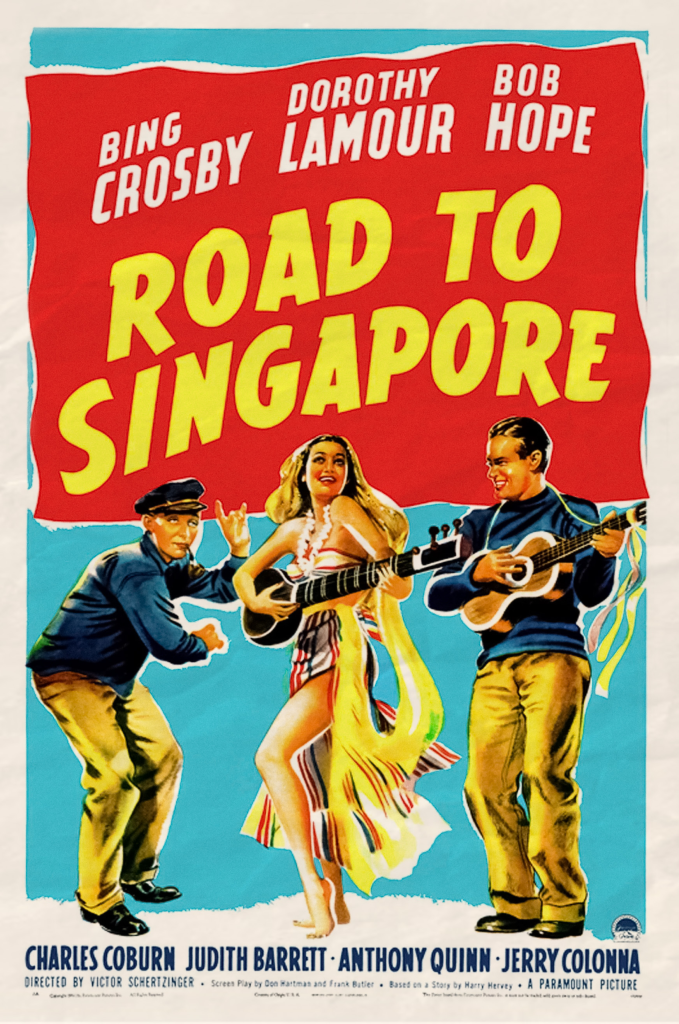
Not wanting to settle down, Josh and Ace head for Hawaii, then later Singapore. In Singapore, they meet Mima (Dorothy Lamour), a local woman who is involved in an abusive relationship with her boyfriend and dance partner, Caesar (Anthony Quinn). Josh and Ace allow Mima stay with them. This sets off some funny scenes where Mima tries to clean the men’s home and cook them proper meals. She also decorates their shack to make it more homey. At first Ace and Josh resent Mima “feminizing” their space, but it is obvious that they secretly like it–and Mima. Eventually they run out of money and Ace comes up with a scheme selling a cleaning product. He assumes the role of snake oil salesmen when he tries to promote this product to the native population, but the sales pitch does not go well. Eventually, Mr. Mallon and Gloria find their way to Singapore to bring Josh back.
It’s obvious why Bob Hope and Bing Crosby were so successful in their road films. The two men were best friends in real life and their friendship extends on screen as well. Dorothy Lamour also co-starred in the “Road” films and she is a good extension to the team. Her character fits well without her seeming like she’s the third wheel, or just shoehorned in. Hope and Crosby’s characters play to their strengths, with Hope having a lot of comedic parts and Crosby singing. Lamour was a dancer and singer and her strengths are allowed to be showcased as well. I haven’t watched the other “Road” movies yet, but I look forward to seeing the next one.
Boy, Did I Get the Wrong Number! (1966)
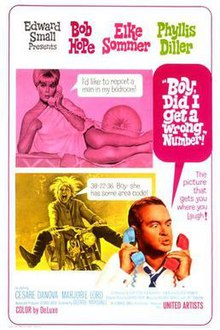
This movie is one of Bob Hope’s 1960s sex comedies. I am not sure how he ended up in these types of films, but for whatever reason they work for me. I quite enjoy his 1961 sex comedy, Bachelor in Paradise, co-starring Lana Turner. In ‘Number,’ Hope plays married man, Tom Meade, a California businessman who sinks a fortune into a remote lakeside cabin in Rocky Point, Oregon. He thinks that he’ll easily be able to resell it for a profit, but the cabin turns out to be a money pit. It also turns out that the cabin is too rural and not in a desirable place to live.
At the same time, French actress, Didi (Elke Sommer), is tired of playing a sexpot who is renowned for her sexy bathing scenes in her films. When her director/lover insists that she take yet another sexy bath, Didi protests, gets into her car and drives off. In a plot point that doesn’t really make sense, but we’re going with it, Tom makes a business call and is accidentally connected with Didi. She explains that she’s holed up in a nearby hotel and is in need of food and water. Tom tries to covertly sneak out of the house to deliver food and water to Didi’s hotel, but his housekeeper, Lily (Phyllis Diller), catches on and soon she’s involved in the scheme as well.
Seeing his opportunity to profit off this situation, Tom offers Didi the use of his Oregon cabin. Knowing that there’s an intense manhunt for her, Tom thinks that by allowing Didi to stay at his home, he can market it as the cabin in which she hid out. Didi takes Tom up on the offer and relocates to Southern Oregon. As a native Oregonian, when scenes at the the cabin were shown, I could tell from the landscaping that they were not in Oregon. I was right. The “Oregon” scenes were filmed at Lake Arrowhead in California. This film definitely was not the type of film where realism mattered, the extra expense to film on location in Oregon wouldn’t have made a difference.
The main conflict of the film comes when Tom’s wife, Martha (Marjorie Lord) wants to spend a romantic weekend at the cabin. He’s stuck between a rock and a hard place, as he obviously can’t tell Martha the truth. Tom and Lily arrive ahead of Martha and find Didi nearly unconscious from sleeping pills. They manage to move her to a bedroom just in time for Martha’s arrival. This sets off a comedy of errors with Tom needing to move Didi from room to room to keep his secret from Martha. Phyllis Diller has some very funny scenes, including multiple scenes with her driving a motorcycle. I particularly liked the scene when she mowed down all the Boy Scout tents. Hope and Diller had fantastic chemistry. Their chemistry was so good in fact, that it almost makes Martha and Didi secondary characters. As an aside, Marjorie Lord has the absolute worst hairstyle in this film. I know the 60s were about beehives and tall hair, but Lord’s hair is completely absurd. It looks like she placed Agnes Moorehead’s Endora wig on top of a dutch boy haircut.
